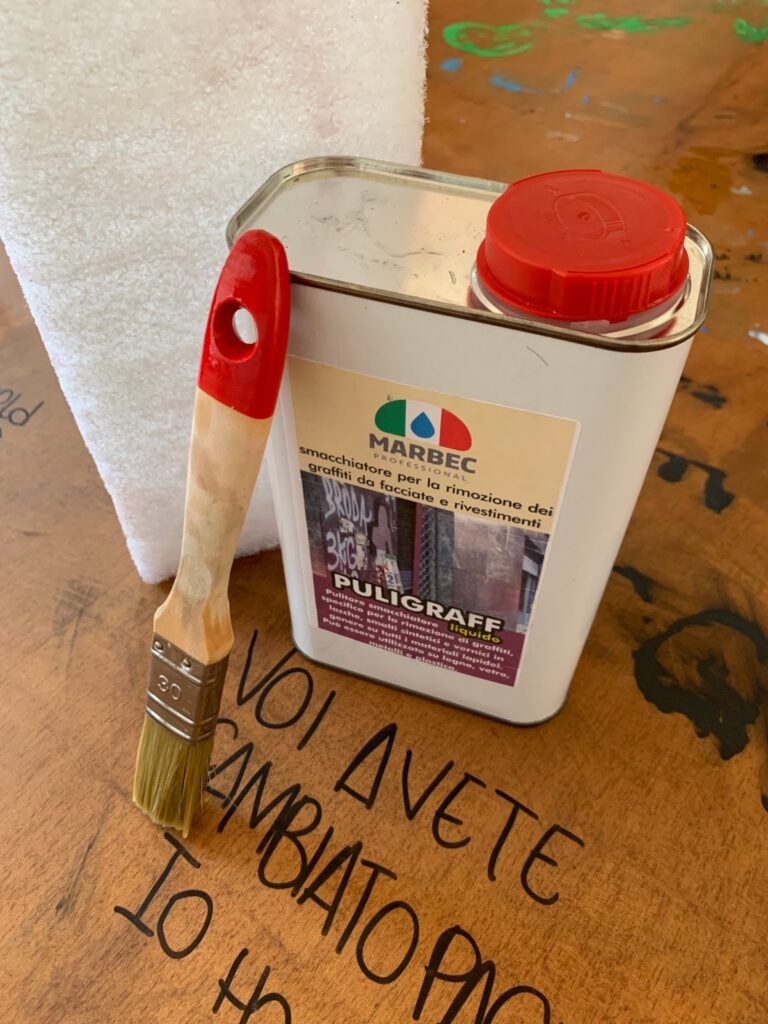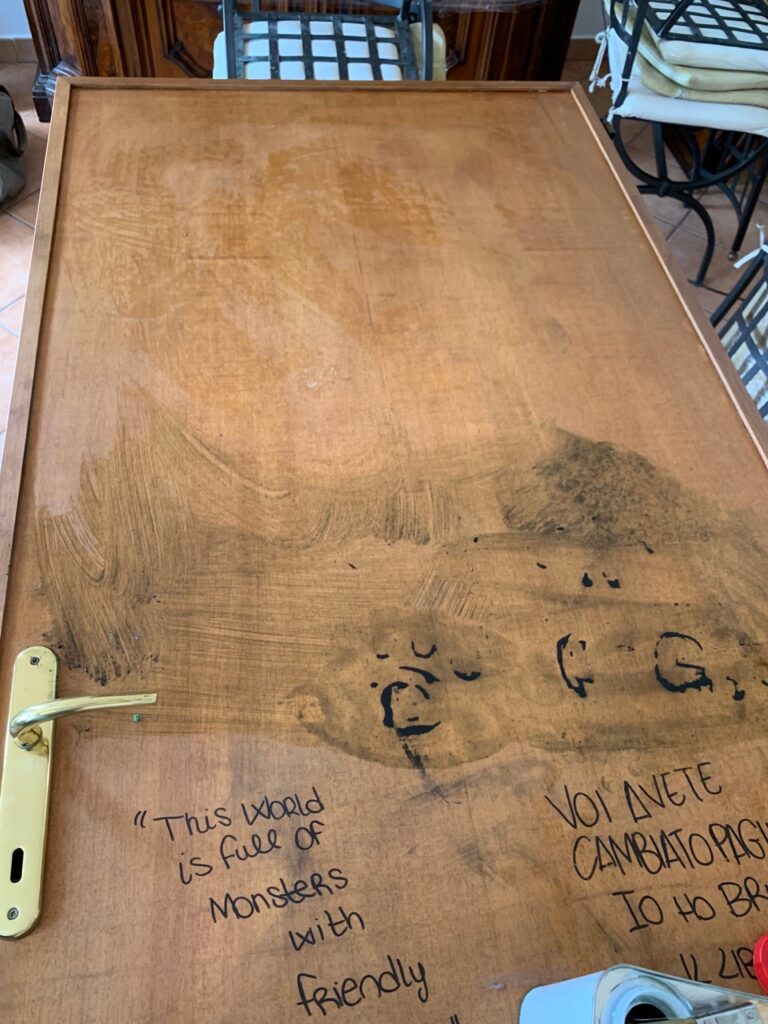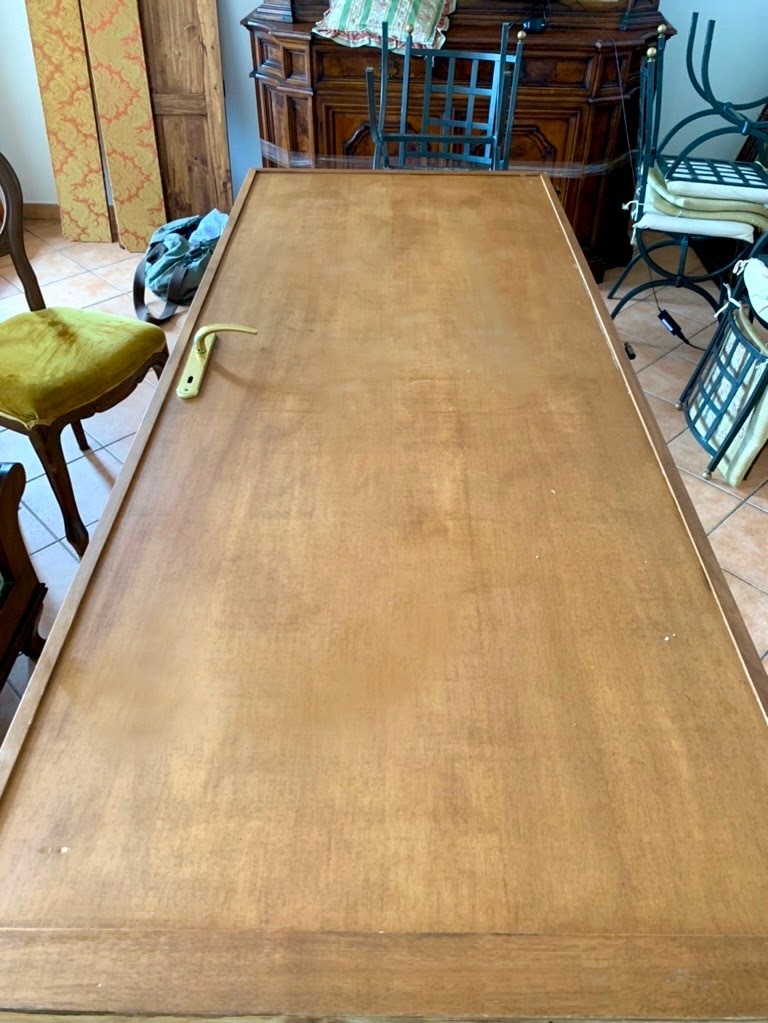Good afternoon to everyone. Last time we asked ourselves if you are taking care of the parquet in the right way, while this time the owner of a bar/restaurant wrote to me about a very unpleasant fact that is common in some of his colleagues.
‘Hi Nicola, I am the owner of a bar/restaurant. Unfortunately, over time, people have ruined the wooden doors of my bar with various writings and marker stains. I’m doing some renovations right now and would like to remove these marker stains. Is it possible? How should I proceed?’
Before answering to this month’s request, I want to remind you that if you are interested in a particular topic you can write to contatti@marbec.it. It is an opportunity for a virtual appointment with me and Marbec to learn about the many cleaning and recovery methods.
That said, this month’s case is very common; in fact, many times it will have happened to all of you to enter the bathrooms of the premises finding writings and marker stains on the doors. It is normal for the managers of these places to wish to find the best way and products to solve the situation and eliminate the stains.
So let’s see together what is the perfect technique and the right products to remove marker stains from doors.
Tips for removing markers from doors
The doors are made of wood and the owner needs to remove marker stains without leaving a trace.
First of all it is therefore necessary to arm yourself with a brush and PULIGRAFF LIQUIDO, a stain remover that is used to remove, specifically, graffiti, lacquers, synthetic enamels and paints but that can also be used (as well as on metals, plastic and glass) on the wood.
You must then brush the PULIGRAFF LIQUIDO over the writing, letting it act for a few seconds before rubbing everything with a WHITE MARBEC BUFFER and finally rinse with clean water, repeating the operation if necessary.
Once the door is clean and dry, to give a final touch giving uniformity to the whole, you can apply LIGNOLIFE or LIGNOLIFE OPACO.
The first is a specific waxy finisher for renovating wooden surfaces, with excellent protective capacity and particular resistance. 1-2 coats (thin and evenly) should be applied with a microfiber cloth, a sponge or a fleece wax spreader, then waiting for drying which takes about 2-3 hours in ventilated rooms.
The second is a carnauba-based resin-wax emulsion and is the ideal product to protect and restore matt painted wood surfaces. It is applied following the same instructions for use described for LIGNOLIFE and as the latter product, it is resistant and has excellent protective capabilities.
Thanks to the use of these products and following the correct procedure, marker stains only turn into a bad memory!
Once again, the advice corner ends here and of course I hope that the information I gave has been useful.
The invitation, as always, is to share them with anyone who needs them and the appointment is next month!
Nicola

A glossy varnished teak parquet, heavily worn and scratched, was completely restored thanks to a meticulous refurbishment process. The final result is a floor that is once again bright, uniform, and protected, with a glossy finish that enhances the natural elegance of the wood and makes ongoing maintenance easier over time.

The artisan company PIPPOLO, specialized since 1991 in the treatment of stone materials in the Tuscany–Emilia region, carried out a restoration and enhancement of a terrazzo floor. The work included three main phases: a deep cleaning with SGRISER and a red pad to remove old treatments and incrustations; the hydrophobic protection with TON PLUS to prevent the absorption of liquids and revive the colors; and finally, the finishing with POLIFIN, a self-polishing metallized wax that provides brilliance and resistance to foot traffic. The result is a terrazzo floor that is renewed, luminous, and perfectly protected.





















